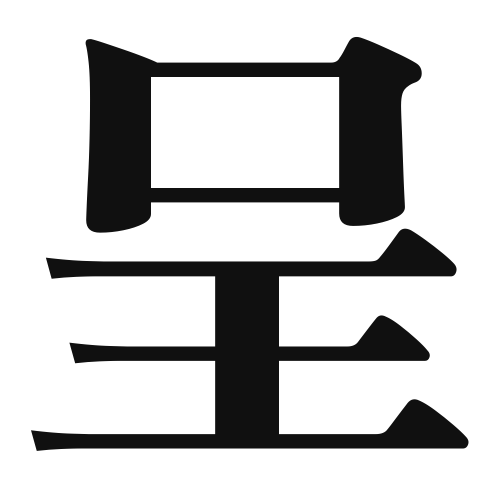1. Overview of Meaning
The kanji “呈” (pronounced “tei”) generally means “to present” or “to show.” It is often used in contexts where something is being offered or displayed to someone else.
2. Formation and Radical
Formation of the Kanji: The kanji “呈” is a compound character (会意文字) that combines elements to convey its meaning. It consists of the radical for “hand” (手) on the left, indicating an action performed by a person, and the character “青” (meaning “blue” or “green”) on the right, which can imply something fresh or new.
Radical: The radical of “呈” is 手 (shǒu), which relates to actions performed by the hand, emphasizing the act of presenting or showing.
3. Examples of Usage
Common Words and Phrases: Some frequently used words that include “呈” are:
- 呈示 (ていじ, teiji) – presentation
- 呈現 (ていげん, teigen) – to present or display
Example Sentences in Daily Conversation:
- この資料を会議で呈示します。 (I will present this document at the meeting.)
- 彼は新しいアイデアを私たちに呈現しました。 (He presented us with a new idea.)
4. Synonyms and Antonyms
Similar Kanji: A similar kanji is “示” (しめす, shimesu), which also means “to show” but is more commonly used in contexts like “to indicate” or “to demonstrate.” The difference lies in the nuance; “呈” often implies a more formal or respectful presentation.
Antonyms: An antonym for “呈” could be “隠す” (かくす, kakusu), which means “to hide.” This represents the opposite action of presenting or showing something.
5. Cultural and Historical Background
Relation to Japanese Culture: The kanji “呈” is often used in formal settings, such as ceremonies or presentations, reflecting the importance of respect and formality in Japanese culture.
Proverbs and Idioms: While there may not be specific proverbs that use “呈,” the concept of presenting or offering is deeply embedded in Japanese customs, such as the practice of giving gifts or making formal presentations during meetings.
